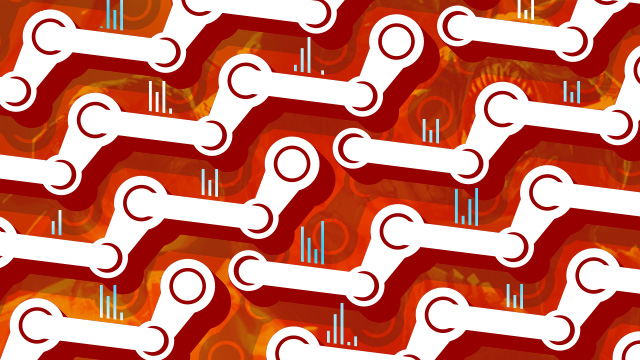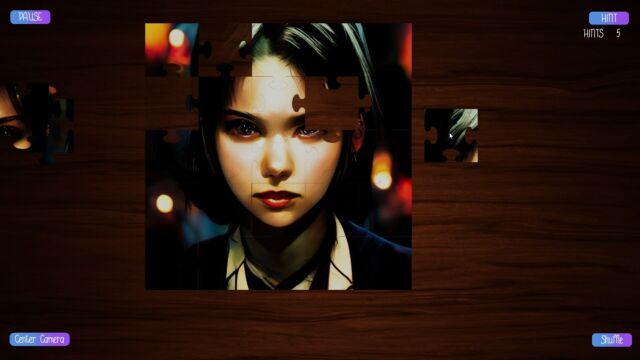
Can you tell which of these seemingly identical bits of Steam iconography were generated using AI (trick question, it’s none of them).
Aurich Lawson
Valve has reportedly become the latest company to react to the uncertain legal landscape surrounding AI-generated artwork by simply barring its use in submitted materials. An anonymous developer going by the Reddit handle potterharry97 reports having a Steam game page submission rejected for the use of “art assets generated by artificial intelligence that appears to be relying on copyrighted material owned by third parties.”
Potterharry97 originally posted about the rejection in a May post on the now-private GameDev subreddit (partially archived here, Google Cache here). In that post, potterharry97 admitted that “a large portion of the assets have some AI involvement in its creation” through the use of Stable Diffusion. In a follow-up post this month on the AIGameDev subreddit, potterharry97 wrote that the initial submission was intended as an early placeholder version, “with 2-3 assets/sprites that were admittedly obviously AI generated from the hands.”
That “obvious” use of AI art tools apparently set off some alarm bells with a Valve moderator, who reportedly replied that Valve had “identified intellectual property… which appears to belongs to one or more third parties. In particular, [Game Name Here] contains art assets generated by artificial intelligence that appears to be relying on copyrighted material owned by third parties.”
“As the legal ownership of such AI-generated art is unclear, we cannot ship your game while it contains these AI-generated assets,” Valve’s message continued, “unless you can affirmatively confirm that you own the rights to all of the IP used in the data set that trained the AI to create the assets in your game.”
Potterharry97 resubmitted the game with some art edits to remove “any obvious signs of AI.” But the developer said Valve’s response indicated that after “[taking] our time to better understand the AI tech used to create [the game],” Valve was still “declining to distribute [the game] since it’s unclear if the underlying AI tech used to create the assets has sufficient rights to the training data.”
“I didn’t even realize AI art was not allowed, as I’d heard of it being used, and even seen a few fairly obvious examples myself,” potterharry97 wrote in the comment thread below their initial post.
Whose art is it, anyway?
It’s unclear if potterharry97’s reported game rejection represents a new, official Valve policy. We have yet to see any other reports of Steam games being rejected for similar reasons; on the contrary, some games that clearly and explicitly use AI-generated art have been available on Steam for months. Neither Valve nor potterharry97 were immediately available to respond to a request for comment.
That said, it wouldn’t be surprising if Valve was feeling skittish about allowing AI-generated art assets in Steam games. Valve’s Steam Direct publishing guidelines already bar games featuring “content you don’t own or have adequate rights to,” and establishing “adequate rights” to art generated by many popular AI tools can be a fraught legal minefield at the moment.

In January, artists filed a class-action lawsuit against a number of generative AI art companies over their use of copyrighted training data. Getty Images joined in with its own similar lawsuit in February.
Legal questions over whether training an AI model represents a “fair use” of copyrighted material are incredibly thorny and currently unsettled. Given that uncertain legal environment, organizations like Getty Images, Newgrounds, and science journal Nature have explicitly banned contributors from using AI-generated art. At the same time, companies from Marvel to DeviantArt have embraced the technology to one degree or another.
Creators and corporations can sidestep any potential unsettled legal issues by using an AI art generator trained on public-domain and officially licensed images, such as Adobe Firefly. But the existence of such tools shows how difficult enforcement of an AI art policy could be for a company like Valve, which might have trouble verifying the training-set legality of all the myriad image-generation tools a developer could use (including game engines like Unity).
Similar ownership issues can and do crop up with human-generated art in Steam games, of course, But Valve’s moderators don’t seem to feel the need to explicitly verify the art copyrights for every game submission before it goes up on Steam, barring explicit complaints or obvious copyright infringement.
These days, the use of AI-generated art can sometimes be easier to catch, as was the case with potterharry97’s Stable Diffusion sprites and their telltale hands. But that might get tougher as improvements in generative synthesis models make AI art more and more indistinguishable from art created by a human.
As potterharry97 put it in his initial Reddit post, “Even if I redo everything from scratch, how can I definitively prove if something was or wasn’t AI generated?”
